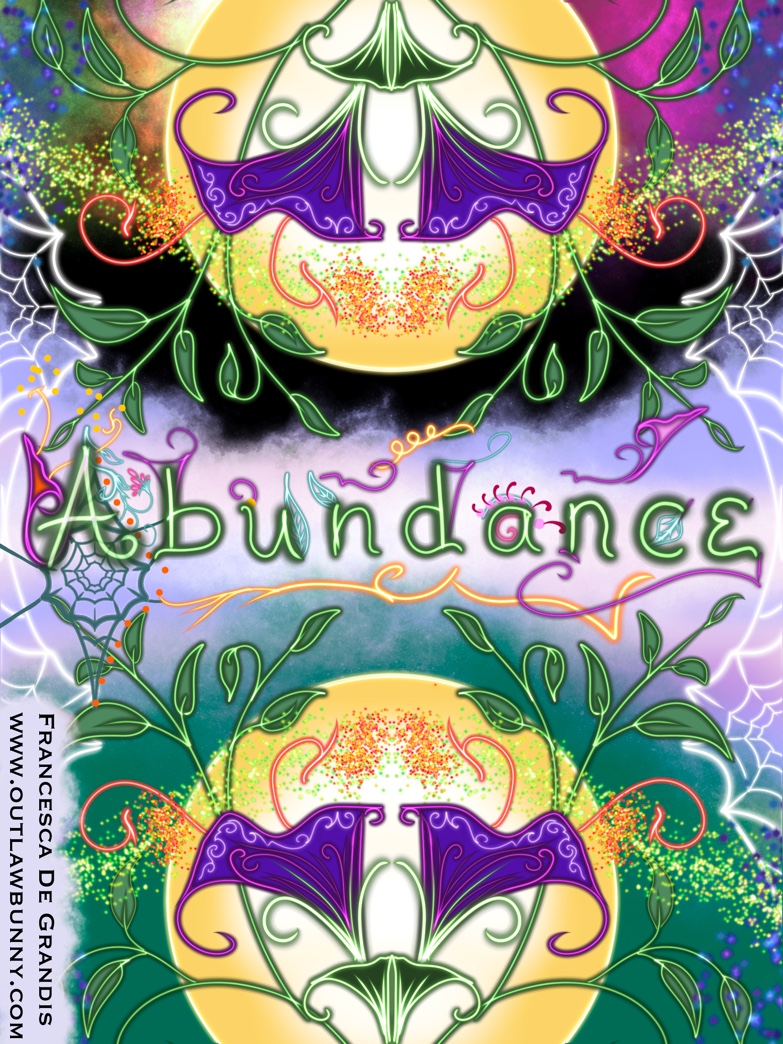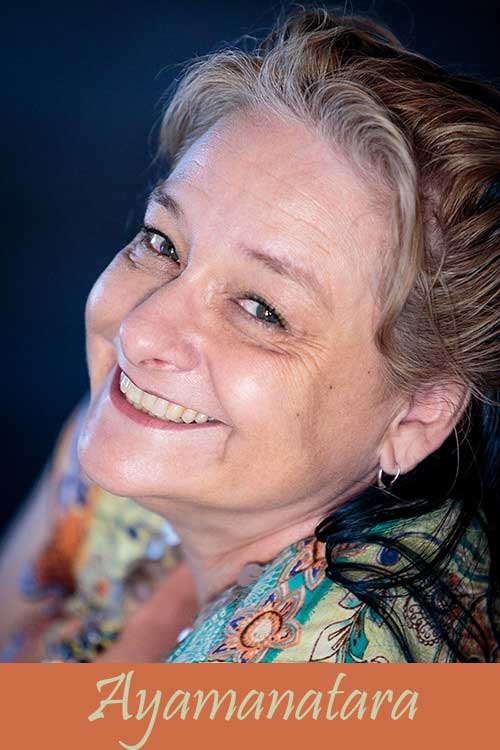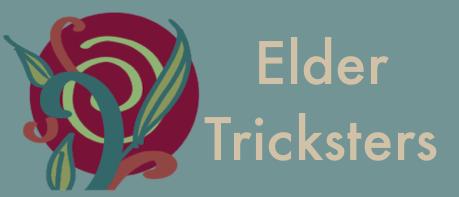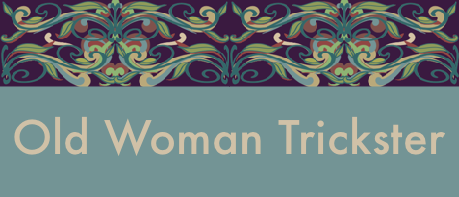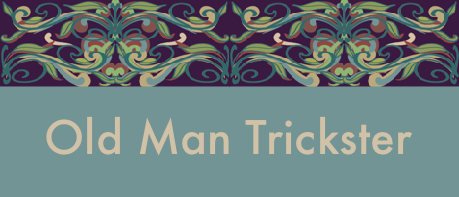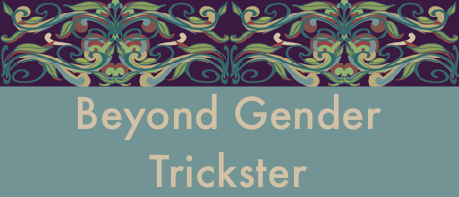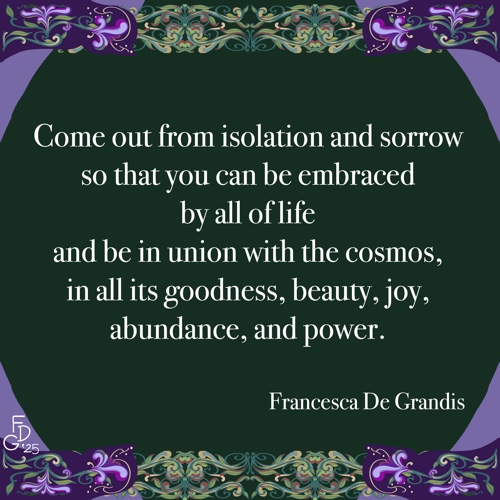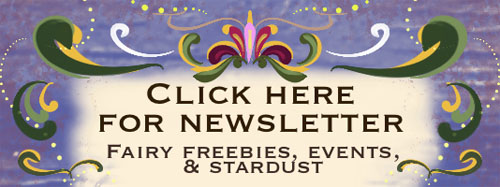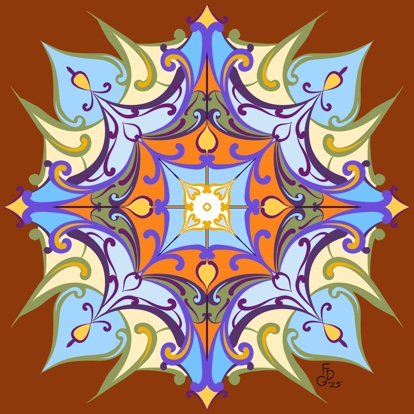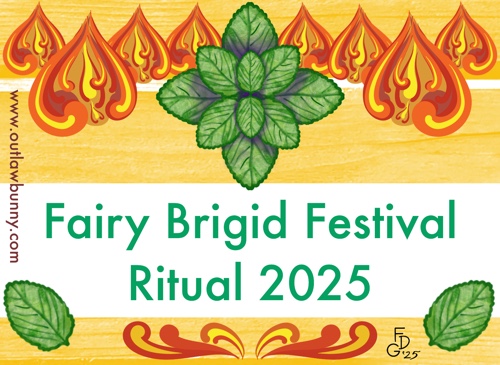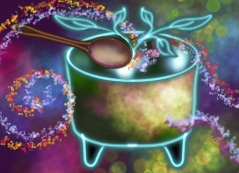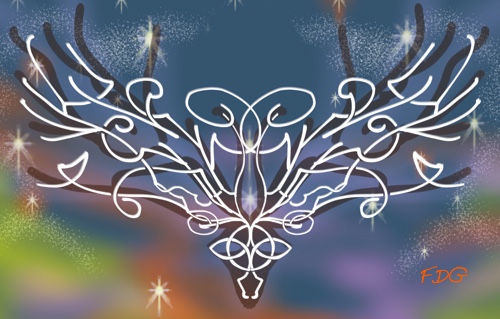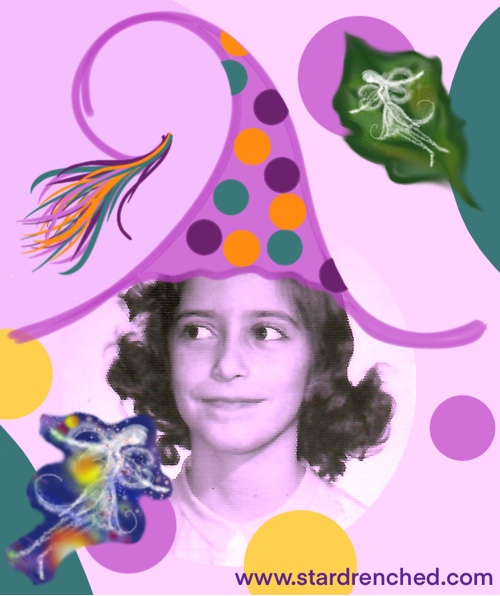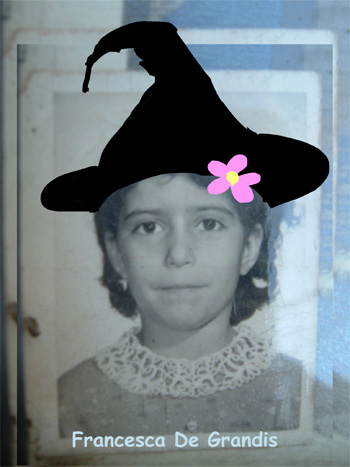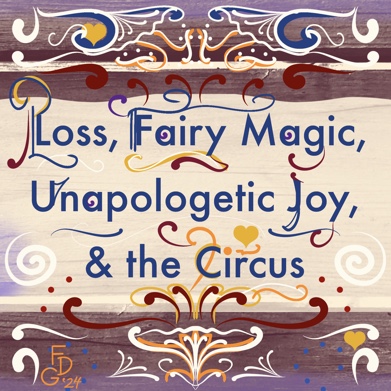What Is Fairy Gold?
Fairy Gold’s Definition
in Myth, Fairy Tales, and Other Lore
“Beware of Faerie gold.”
Lore, myth, and Fairy tales insist,
“Fairy gold is a trick,
a cruel deception.
Fairy gold will turn to leaves in your pocket.”
They are pseudo-spirituality,
biased scholarship
meant to stop you from
trusting your Fey kin,
using magic,
and honoring your Goddess-given desire
for prosperity and good luck.
Lies about Fairy Gold and the Fair Folk
I wrote this essay because lies about the Fey Folk make me heartsick. (I will explain why momentarily.) I saw no one countering the lies, let alone offering alternatives. So this essay is comprised of some of my own.
Though the essay focuses on lies about Fairy gold, it also rectifies other lies about the Fair Folk. So mote it be!
Fairy Gold Is Not Fake
It is Real Wealth
How blessed!
How wealthy
to have a pocketful of leaves!
How fortunate.
They are greens for a salad.
They are fodder for a cow,
so its meat can nourish mine.
Often they have been stolen, tossed aside,
and replaced with false ore.
Fairy Gold Is Real Treasure
It might stay gold. I can buy herbs, salad greens,
fodder for cows, cows, meat from the grocers,
a home that shelters and pleases me,
and all other necessities,
including what will nurture my
joy and usefulness to others.
Fairies, Deception, Whimsy, Love
are nasty,
hate humans,
play cruel tricks,
and whimsically cause human tragedy.
have taken care of me lovingly
since my birth.
More about Fairies, Deception, Whimsy, Love
Not a cruel deception, but creative whimsy.
It is a loving surprise: When you return from Fairy realms,
examine your pockets’ contents.
Find their worth.
Is it what you asked for?
So mote it be!
Fairies Love Humans:
Fairies, a Ruling Class, and Propaganda
This essay counters lies by pointing them out and providing alternatives. Everything in the essay was learned through personal experiences:
![]() I have spent 76 years traveling with the Fey. These remarkable companions saved my life, giving me an abundance of magic, love, and wonder, to say the least.
I have spent 76 years traveling with the Fey. These remarkable companions saved my life, giving me an abundance of magic, love, and wonder, to say the least.
![]() I have adventured through Fairy realms and come back to the mundane world better equipped to create a wonderful material and spiritual life.
I have adventured through Fairy realms and come back to the mundane world better equipped to create a wonderful material and spiritual life.
![]() For decades, I have noticed the deceptive ruling class’s lies about magic and Fairies.
For decades, I have noticed the deceptive ruling class’s lies about magic and Fairies.
The ruling class tries to stop anyone—except themselves— from having power. So they lied about Fairies. This made most people forget humankind’s long-standing beneficial alliance with the Fair Folk. Old stories were twisted. Forgetting the history of their ancestors, people stopped turning to Fairies.
This meant most people lost the help Fairies can give for everything from creativity to abundance. The Fair Folk have always helped humans fight oppression and lifted up the oppressed.
 Slander that is the exact opposite of the truth about the kind and beautiful Fey makes me heartsick. It makes me heartsick that a ruling class would lie to stop humankind from turning to the Fey for help to be prosperous, grow healthy crops, be inspired in their art, and more. It makes me heartsick that deception keeps people from the beautiful, happy companionship that the Fey give me.
Slander that is the exact opposite of the truth about the kind and beautiful Fey makes me heartsick. It makes me heartsick that a ruling class would lie to stop humankind from turning to the Fey for help to be prosperous, grow healthy crops, be inspired in their art, and more. It makes me heartsick that deception keeps people from the beautiful, happy companionship that the Fey give me.
Let’s address the etymology of Fairy gold. That will create a foundation for further explanation of how lies about Fairies entered myth, folktales, and other lore.
Origin of Fairy Gold (Etymology)
The idea of Fairy gold comes from oral tradition. Oral tradition is the oral transmission of a culture’s values, morals, and other aspects, through stories, live music, chants, and more modes.
 But ancient stories, music, phrases, and other communications can be twisted to suppress and oppress. Disguised as wise advice, intentionally corrupted forms are meant to sever us from our Goddess-given wisdom or otherwise diminish us. This diminishment includes alienating us from otherworldly allies.
But ancient stories, music, phrases, and other communications can be twisted to suppress and oppress. Disguised as wise advice, intentionally corrupted forms are meant to sever us from our Goddess-given wisdom or otherwise diminish us. This diminishment includes alienating us from otherworldly allies.
Along with the ones previously mentioned, there are two other sources for this essay. They are my past life memories and common sense. I remember a time before certain ancient wisdoms were warped in both oral tradition and lore. Common sense insists there must’ve been such a time.
I will give examples of the corrupted forms used for propaganda. First, let’s do a spell. That otherworldly moment will build a foundation for those examples.
To cast the spell, simply read the next section. If you don’t consciously experience magic, no problem. Magic is happening. The otherworldly foundation for examples is built:
The Original Meaning of Fairy Gold
The Original Knowledge
let your cells think back …
cells travel back … cells feel back …
to before Fairy tales were written down.
Now your atoms feel the original oral tradition.
The original knowledge
tells you the truth about Fairy gold.
Usage of the Term Fairy Gold
Propaganda that feeds oppression replaced the truth about Fairy gold. Now the term Fairy gold appears as a device in folktales and literary stories that supposedly prove the following lies:
* We should fear them.
* Longing for bounty and happiness is not legitimate. It is greedy.
* Wanting worldly possessions is shallow. So you are superficial if you stand up for your rights to material wellbeing.
* You should scorn momentary happiness, as if being in the moment were not among the most spiritual traits.
* Momentary happiness is an illusion.
* There is no difference between a healthy pursuit of momentary happiness and a pursuit that is an addictive avoidance of feelings, responsibilities, and life itself.
Here is how I use the term:
A Fairy Witch Spell
for Wealth, Joy, and Freedom
A note on the following spell: Despite my lifelong, wonderful experiences with the Fey Folk, a lot of evil Fairies exist. They will play cruel jokes and deceive you to destroy your life. They rejoice in making people suffer.
 For example, I said above that examining your pockets will reveal something you need. That is not true if a bad Fairy gave you a “gift.” When you reach into your pocket, its contents will bite you like a scorpion, even if the “gift” seems like your heart’s desire at first.
For example, I said above that examining your pockets will reveal something you need. That is not true if a bad Fairy gave you a “gift.” When you reach into your pocket, its contents will bite you like a scorpion, even if the “gift” seems like your heart’s desire at first.
Acknowledging bad Fairies and the harm they do is vital. As is learning how to protect yourself from them. So I will address that in a moment. But rejecting all Fairies is like rejecting all humans because of the harmful ones. It would leave us isolated. Then good humans and Fairies cannot help protect us from the bad ones. Oppressors’ insistence that Fairies are inherently bad is a tactic to isolate you.
Bad Fairies often prey on humankind, usually without humans noticing.
My essay, Ethical (and Unethical) Fey Teachers, has more information about bad Fairies and their human pawns.
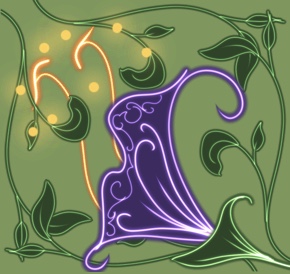 There is also more about how to deal with bad Fairies at the end of this essay, where I also discuss revisiting the essay while keeping in mind evil Fairies.
There is also more about how to deal with bad Fairies at the end of this essay, where I also discuss revisiting the essay while keeping in mind evil Fairies.
The following magical spell fosters an alliance with kind Fey. It also fosters the ability to tell the difference between good and bad Fey.
And with that, here is a spell that is one of my alternatives to Fairy gold being used in deceptive lore.
The spell consists of a series of affirmations. The affirmations are also informative. To perform the spell, simply say the series of affirmations, silently or aloud. There is no need to recite in a special way. Simple spells are sometimes the most effective ones.
The Fairy Queen and King are my kin.
My Fey kin honor my longing
for bounty and happiness as sacred.
They know that worldly possessions
and material wellbeing are important.
They help me stand up for my rights.
They celebrate my happiness.
They help me be in the moment
because they understand that being in the moment
is the greatest source of true happiness.
Everything turns to dust. Even stars.
I am stardust.
Crumbling to dust is part of life. It does not invalidate life.
Dust is part of the circle of life.
I am constantly reborn,
letting a moment fade away
and being reborn in a new moment.
I am gratefully a fool:
Belief in life’s goodness is
gorgeous, happy, sacred tomfoolery.
I will be careful
and discerning.*
I ask my good Fey kin to guide and protect me.
I examine the situation—including my motives—
to know whether good or bad Fey have arrived.**
Fairy gold,
Fairy gold.
It is wealth.
It is the loving camaraderie of my Fey kin.
It is the moment.
Fairy gold.
Notes:
* When assessing the morality of a Fairy, I suggest you reread this essay. While reading, keep in mind that my remarks about leaves in your pocket vs a scorpion ready to sting are not the only exceptions to my statements about the goodness of Fairies. This should help your evaluation of a Fairy.
 It felt important to write the earlier parts of this essay in the manner that Italians call “taking a position.” That can mean, as was the case with the earlier parts of the essay, portraying a nuanced situation as black-and-white, to make a point. Lyrical composition was needed to bring the point and its magic home. Lyric could not have accomplished that without taking a position.
It felt important to write the earlier parts of this essay in the manner that Italians call “taking a position.” That can mean, as was the case with the earlier parts of the essay, portraying a nuanced situation as black-and-white, to make a point. Lyrical composition was needed to bring the point and its magic home. Lyric could not have accomplished that without taking a position.
(My perfectionism is telling me: Doing the hard work of writing the lyric and this follow-up disclaimer will equip me to construct lyric that does not require taking a position. My perfectionism adds that I need to walk away from this essay for a year so my subconscious can process the writing I’ve already done, so I can rewrite it. Shhh. Though I often walk away from a piece for months if not years, until I know how to write it, that doesn’t feel necessary for this essay. Its points have been presented with depth and nuance, which has been quite an accomplishment. And no one else is making these points so it’s time to make them. Shhh, perfectionism, I am telling you the truth, shhhh.)
 ** If you need more help assessing the morals of a Fey being, make an an appointment for a psychic consultation. Often, situations are so individual that there’s no one-size-fits-all solution. Decades ago, I became the go-to person for individuals facing challenges with otherworldly matters. I was trained for this work from childhood and learned even more over the decades I have done it.
** If you need more help assessing the morals of a Fey being, make an an appointment for a psychic consultation. Often, situations are so individual that there’s no one-size-fits-all solution. Decades ago, I became the go-to person for individuals facing challenges with otherworldly matters. I was trained for this work from childhood and learned even more over the decades I have done it.
There are more lies about Fairies than I covered here. If certain lore—or modern opinion—about Fairies seems wrong to you, and you would like me to address it, tell me in the comment field below. Even if you don’t know why the lore or opinion puts you off, I am happy to look at it and share my thoughts.




